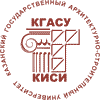About the authors
| First name, Middle name, Last name, Scientific degree, Scientific rank, Current position. Full and brief name of the organization, The organization address. | Erkebulan B. Mazhitov, candidate of technical sciences, associate professor, Zhangir Khan West Kazakhstan Agrarian Technical University, Oral, Kazakhstan Email: This e-mail address is being protected from spambots. You need JavaScript enabled to view it , ORCID: 0000-0001-6155-4865 Andrey Yu. Belyakov, head of laboratory, Kazan State University of Architecture and Engineering, Kazan, Russian Federation. Email: This e-mail address is being protected from spambots. You need JavaScript enabled to view it , ORCID: 0000-0003-0017-1419 Evgeny G. Gulyakov, engineer, Kazan State University of Architecture and Engineering, Kazan, Russian Federation. Email: This e-mail address is being protected from spambots. You need JavaScript enabled to view it , ORCID: 0000-0002-7065-8022 Oleg V. Khokhryakov, doctor of technical sciences, professor, Kazan State University of Architecture and Engineering, Kazan, Russian Federation. Email: This e-mail address is being protected from spambots. You need JavaScript enabled to view it , ORCID: 0000-0001-5337-2850 Vadim G. Khozin, doctor of technical sciences, professor, Kazan State University of Architecture and Engineering, Kazan, Russian Federation. Email: This e-mail address is being protected from spambots. You need JavaScript enabled to view it , ORCID: 0000-0003-0874-316X |
| Title of the article | Low water demand cement – effective clinker-containing binder for modern concrete |
| Abstract. | Problem statement. The need to reduce the clinker content in industrial cements to reduce energy costs and carbon dioxide emissions encourages the wider use of mixed binders with a high content of substituting mineral additives. At the same time, their use is associated not only with a decrease in the share of expensive clinker, but also with the need to impart improved construction and technical properties to concrete (water resistance, frost resistance, crack resistance, corrosion resistance). The authors propose a direction for the most effective use of mineral additives by producing low water demand cements, in which the share of clinker is minimized, and in terms of technical and environmental indicators they surpass not only mixed binders, but also all general construction Portland cements produced by global manufacturers. The aim of the study is to conduct a comparative analysis of the efficiency of traditional Portland cement and low water demand “carbonate” cement in terms of composition of hydration products and physical and mechanical properties in heavy concrete. The research objectives are the comparison of properties of general-purpose Portland cement and low water demand “carbonate” cement; assessment of water demand indicators of concrete mixtures, strength and clinker capacity of heavy concretes based on two types of binders; analysis of compositions of cement hydration products with the possibility of identifying the formation of new compounds. Results. The paper presents comparative results of physical and mechanical tests of cement stone and concrete prepared on the basis of general-purpose Portland cement and low water demand cement (LWC) with carbonate filler. The use of LWC-50 allows reducing the normal density of cement paste by 23.8%, the water-cement ratio of mortar and concrete mixture by 40 and 36.8%, respectively. The increase in strength after 28 days of hardening was the following: cement stone by 39%, cement-sand mortar by 62%, heavy concrete by 23.5%. According to the clinker capacity criterion, which is determined by the ratio of clinker content in the binder accepted per 1 m3 of concrete, LWC-50 is 2.3 times superior to Portland cement CEM I 42.5 N. The method of X-ray phase analysis was used to comparatively assess the composition of crystalline hydrates in the microstructure of cement stone samples. Conclusions. In terms of water demand, strength and clinker capacity criteria, “carbonate” low water demand cements are superior to traditional cement. It has been shown that during the hardening of “carbonate” low water demand cement, calcium hydrocarboaluminates are formed, which obviously contribute to its early intensive hardening and increased activity at the age of 28 days. |
| Keywords. | clinker capacity, carbon dioxide emission, low water demand cement, mixed binders, superplasticizer |
| For citations: | Mazhitov E.B., Belyakov A.Yu., Gulyakov E.G., Khokhryakov O.V., Khozin V.G. Low water demand cement – effective clinker-containing binder for modern concrete // News of KSUAE, 2025, № 2(72), p. 133-144, DOI: 10.48612/NewsKSUAE/72.12, EDN: HJGEVD |













